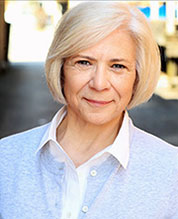Nonfiction
The Bones of Birka
Unraveling the mystery
of a female Viking warrior
When archaeologist Dr. Charlotte Hedenstierna-Jonson discovers that the bones contained in the most significant Viking warrior grave ever opened are in fact female, she and her team upend centuries of historically accepted conclusions and ignite a furious debate around the reality of female Viking warriors and the role of gender in both ancient and modern times.
In The Bones of Birka, author C. M. Surrisi introduces young readers to the events that led up to this discovery and the impact it has had on scientists’ and historians’ views of gender roles in ancient societies and today. This is the inside account of the Birka warrior grave Bj 581 archaeological endeavor, including all of the dreams, setbacks, frustrations, excitement, politics, and personalities that went into this history-changing discovery.
The finding has raised crucial questions about research bias, academic dialogue, and gender identity.
RESOURCES
- The Bones of Birka Press Release, 23 February 2023
- “One for the Books: Never read a whodunit? Naperville Public Library is Chockful of Page-Turners Set in Exotic Locales,” Chicago Tribune, 15 May 2024
- “Q&A with C.M. Surrisi” Deborah Kalb, Q&A with Deborah Kalb, 1 April 2024
- “Gender and Vikings: Assumptions Can Misdirect Science,” Robin Kirk, Rights in Time, interview, 15 June 2023
- “Cynthia Surrisi interview,” It Was a Dark and Stormy Book Club, podcast, 2 May 2023
- “10 New Books to Read in April,” Jennifer Rothschild, Arlington Magazine, 1 April 2023
- “Synergy: Birka Viking Warrior,” Annette Lamb, Teacher Librarians: Bridging Theory and Practice, 13 March 2023
- “New Young Adult Book Explores Archaeology, Gender, and Vikings,” Lydia Moran, Minnesota Women’s Press, 23 February 2023
RESOURCES
REVIEWS
“Surrisi’s book … packs a lot of information into just 156 pages, not counting a glossary of scientific and Viking words and discussion questions. The author gives readers just enough information about the Vikings and when and why they conquered so many countries, as well as women in Nordic sagas, scientific developments in interpreting information from bones, and the whole question of gender roles and what a woman warrior might be like during her lifetime. Bottom line: Why were so many scientists for so many years comfortable thinking the Birka bones belonged to a man? Why so much resistance to the idea the corpse could have been a warrior woman?” (Maryann Grossmann, Pioneer Press … read the full review)
“In 1871, a Swedish entomologist named Hjalmar Stolpe went to the island of Björkö in the northern Baltic Sea to search for bits of amber. Instead, he found what would become one of the greatest archeological sites, the Viking town of Birka that included a burial mound of what appeared to be a high ranking warrior, called Bj 581, dubbed the King of Birka. Given what was known about Viking society and the limits of scientific inquiry at the time, it was assumed that Bj 581 was male. However, with the development of DNA analysis and osteology (the study of bone), modern scientists, like Dr. Charlotte Hedenstierna-Jonson, have been able to determine that Bj 581 was, in fact, biologically female. Surrisi begins with an engaging synopsis of many
related aspects including, but not limited to, an introduction to Viking society, archeological techniques developed by Stolpe himself, and the history of Birka. Much of the second half of the book discusses the many upset reactions from the archeological community to this discovery and the scientists’ efforts to defend their finding. Surrisi’s final chapters provide an in-depth, nuanced, and thought provoking discussion of gender roles and identity in Viking society as well as how bias can affect interpretation of artifacts, all of which are equally engrossing. The work is well documented with notes and sources as well as a useful glossary, discussion questions, and resources; final illustrations not seen. VERDICT: A great recommendation for history lovers, but also an important addition to society’s current discourse on gender expression, roles, and identity.” (School Library Journal, Karen T. Bilton)
“Surrisi, author of middle-grade novels (The Unofficial Lola Bay Fan Club), takes readers on a fascinating journey explaining what led up to Stolpe’s discovery of Grave Bj 581. Surrisi explores Viking culture, and how, with newer scientific methods to examine historical sites, sparked the furious debate regarding the role of gender identity in ancient and modern times.
“… most of the ideas we have about Vikings are either demonstrably false or unverifiable modern perceptions without evidence to support them. A wonderful antidote for those who have an interest in learning what we can know to be true has recently arrived in the library.
“I found this a surprisingly quick read. Many may not think of archaeology as a dynamic field of study, but every time an archeologist digs up something new, that find can change or overturn previous ideas and explanations about how people in the past lived and what kind of people they were. Even technological advances, such as DNA testing of minute amounts of organic material still existent on bones, can lead to breakthroughs and brand new insights. This actually happened when scientists subjected the bones of a Viking (Norse) person discovered over a hundred years ago to DNA testing. A body considered since its discovery to be male and, judging from the grave goods, a high status warrior, tested as XX — no Y chromosome to be found.
“To the surprise of the archaeologists, this discovery exploded through the popular media. They have had to field often contentious questions ever since. A trans Viking?! Really? But what does this DNA test result tell us, beyond the XX chromosome?
“We make progress one discovery at a time. Although this one does not tell us how Vikings constructed gender nor does it give us the full story of all the ways that someone with two X chromosomes made their way through life in Viking society, we do know that earlier depictions of Norse society no longer hold true.” (Steven Dunlap, Mechanics Institute Library, 19 July 2023: full review)
“I liked this one. It was more scientific rather than narrative nonfiction — but it was really interesting. It followed a logical timeline. I liked the questions it raised due to the gender reveal of the Viking grave. I loved how they explored the reactions around the world upon learning the bones were female — and how that changed some people’s opinion of the grave and the Viking Culture. It does make you think…” (YA Book Nerd)
“This nonfiction book tells the story of an exciting and hugely significant Viking find on the Swedish island of Björkö in 1878. Based on the position and contents of the 10th century grave (which included two horses, silk clothing, and a full complement of weapons) it was assumed to be that of an important warrior. The Bones of Birka goes on to detail the intriguing discovery (through osteology and genomic testing) that the occupant of the grave was biologically female. Intended for teens, this is an accessible read for anyone interested in archaeology or Viking history. This book also does an excellent job of demonstrating the need to examine our assumptions and ask the right questions to avoid research bias. (FiveBooks.com)
“Mystery writer Surrisi covers this compelling story—including how the archaeological world reacted to the news and what gender (including transgender identity) and sex might have meant in the Viking world—in minute detail along with touching upon the history of the Vikings, how we’ve learned about them, and how our understanding has changed over time. … her scope and the thoroughness with which she tells the story give readers a very good feel for how scientific research works and how bias impacts investigation. A worthwhile account of a provocative find. ” (Kirkus Reviews … read the full review)
“… riveting historical detail paired with commentary surrounding preconceived notions and their effect on analysis makes for a thought-provoking telling. (Publishers Weekly)
“… An eye-opening and informative look at changing history” (Booklist)
“While aimed at teenagers and school libraries, this book would be very useful to anyone interested in becoming a medievalist. Besides being [ab]out the history, this book is also about those who enter the field, the history, and what it is like to do research. It is also a great overview of the story of Bj 581.” (Medievalists.net)

Social media
Don’t miss any news!
Receive notifications by e‑mail when there’s book news to share.



